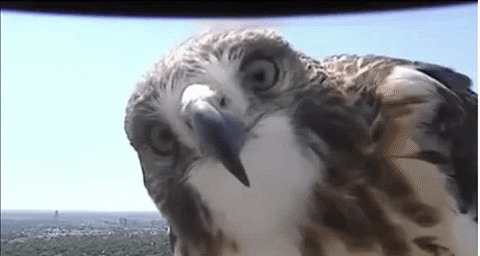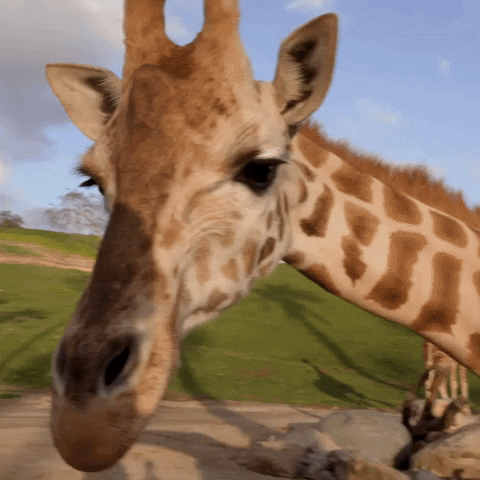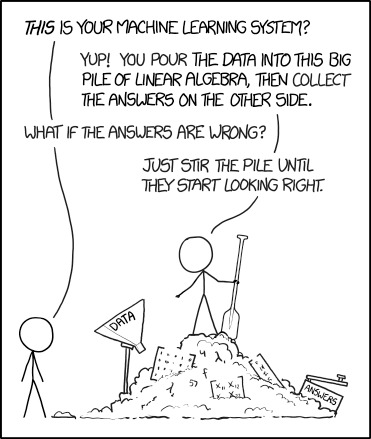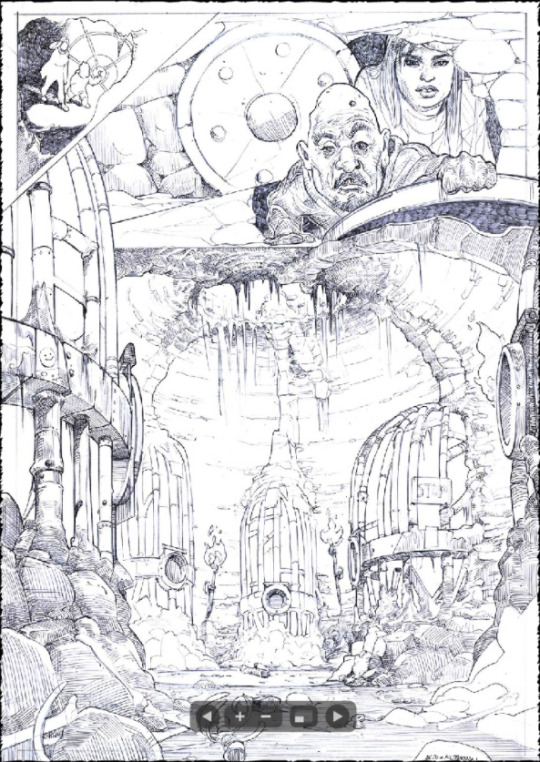uk.linkedin.com/in/juanceballos "Don’t talk about it, do it!"
Don't wanna be here? Send us removal request.
Text
I've moved to new blog site...
Please follow the reading here https://primalmotionstudio.wixstudio.com/juan-ceballos
note: this is the last micro post using tumblr, moving forward I'll post in https://primalmotionstudio.wixstudio.com/juan-ceballos
0 notes
Text

Project Zero?
Disclaimer: I've used OpenAI to iterate and generate this post text. I provided baseline/draft of paragraph and then asked to review interactively (including specific instruction to use humor).
Embarking on AI's rollercoaster ride—machine, deep, reinforcement, and generative deep learning—I've dabbled in self-studying AI techniques from basic SVM to Autoencoders and GANs. It's a wild journey—like trying to catch a futuristic comet with your neural net! 🚀
Note: This latest sentence is coming from AI generation not me :).
After much exploration, I've cracked a possible way to move forward. Think of these techniques as Lego blocks for creating diverse outcomes.
Welcome Project Zero (yes, it's a quick temp name for now), where I'm trying to journey from unstructured narratives to generated content.
No fancy creative reins here—instead, I'm trying to use the power of the latest Language Model (LLM), utilizing prompting, chains, agent, data interpretation, and other LLM wizardry to transform messy narratives into structured gold.
While it's not always a walk in the park to control what AI spits out (thanks to the wild world of non-deterministic programming). Yet, the chaos is part of the charm! ✨
Note: Another discarded proposal from OpenAI: "Admittedly, taming AI outputs is like herding cats in a hurricane " 😊
Keep your goggles on for the wild ride ahead!

0 notes
Text

Causal consistency
Dalet blog reference: The deployment conundrum: cloud vs on-premises – why not both?
Flex Multisite distributed model on cloud or hybrid deployments using eventual system to replicate across multi-repositories for micro-services architecture. Technical requirement summary highlights:
Eventual bidirectional synchronization of multiple datacenters
Replicate multiple SQL/NO-SQL data repos in a micro-service arch
Resolve complex data dependencies and local unique ids across sites
Large volume of entities and event processing
High performance replication processes with scalable system
Causal consistency and conflict resolution for event replication
Self-monitoring and recovery life cycle using canary messages to validate actual system working across multi layers
Auto-resync mechanism using data partition and comparison across multiple repositories for synchronization after outages
For good or for bad, the fact is that the architecture of a complex platform end up stacking directly/indirectly dependent layers of systems and subsystems.
Even though they are de-coupled and in theory independent things get interesting when such systems are stressed in high-volume/high-performance scenarios. Having a macro system that tries to replicate at low level the system consistency while guarantying top level use experience is a fun system.
Reminder "when things go wrong ..." requirement.
0 notes
Photo



Graph with "Thousands of incoming calls per hour: high-volume / high-performance transactional and AI system working together". Details have been removed.
Converstional AI at scale in the era of pre-transformer era
Google, Facebook, IBM provide NLP services using their inmense dataset. However, Enterprises have large volume and high quality domain specific data with scarce availability of training data. Ydilo developed a new AI engine combining unsupervised dialogue multi-intent detection and other Conversational AI strategies, including NLP and ML classification.
User: I want to talk to a human agent. System: Ok. In order to best serve you with a qualified agent, please describe your request. User: I'm calling from my office and I have a problem with my internet connection. It is not working since this morning System: Your incidence is with your mobile data or wifi? User: Wifi... the wifi is not connecting to internet System: We have reconfigured your internet gateway. Your problem should have been fixed now. Please, check again your....
Ydilo has been awarded "Best IT and auto-service project in 2020" AI in realtime conversations at scale requires cloud and software infrastructure designed to serve production and the multi-skilled (AI, NLP, content, data analytics...) teams working behind A high performance system for Telcos, Banks, Utilities and Enterprises requires resolving other challenges when getting this in production. In this context volume of data scales to millions of events and entities with multiple data sources and transactional systems used in real-time conversations. Hundred of thousands inbound calls with the cloud service using AI for automatic transcription and classification. All with real-time interation with on-premise and customer cloud API transactional services In order to deploy daily/weekly to production a CI/CD process is required. This is integrated with an AI ML pipeline to update, train, validate and deploy versions continuously. It is critical the operation stack with custom tools specifically developed, both in order to have a complete view of technical & business performance, from bird-eye to fine detail view, as well as new workflows to manage AI model and processes life cycle.

Note: the human with a shovel here "represents" the requirement to do this at high-availability and reliability level with multi-disciplinary internal and customer teams (e.g.: from technical -dev, qa, ops, business analyst..- to UX and linguistic experts). In case of Ydilo we designed and developed a set of pipeline, automation and suitable tools as complete continuous learning an delivery AI + transactional production platform... a little more complex than a human with a shovel ;)
0 notes
Photo


Read more about the Job Execution Framework (JEF) public information in Dalet Flex documentation
Scalable Distributed Job Processing for Media Workflows
Technical requirement summary highlights:
- Execute sync/async job in single/multiple steps
- Execute high volume fault tolerance and high-performance jobs
- Balance flexibly execution across service instances with rate limiter
- Define and register job types dynamically at runtime
- Scale job executor nodes to suite required throughput
- Jobs can paused/resume on any service instance or globally
- Minimum footprint on CPU consumption allowing job executor service instance running thousands of jobs at a time
- Self-healing capabilities and ability to delegate job executions to other job executor instances transparently
- All integrated into another microservice architecture without strong dependencies, enabling independent development and production life cycles.
Dalet Flex Enhance Production Capabilities, Resource Allocation and Auto-Scaling: support Kubernetes for media processing on Cloud Infrastructure ... and don't forget a key requirement: "When things go wrong...": e.g.: "cancelling" in a distributed system and distributed Lock mechanism to orchestrate access to the objects being used by the jobs, microservice restarting while running jobs and guaranteeing business continuity... JEF enables the media processing plugins: provides an open system for customers as partners to expand the Media platform with new integration and custom developments. Kudos: Dalet & Asite development team Update 2019: Dalet acquired Ooyala Flex.
youtube
0 notes
Link
... but we are trying to simplify things up and provide "Immersive Experiences" easily accesible to anyone. Desktop and Mobile browsers can render nowadays video, audio, images, dynamic content, animations, 3D objects from CGI or real-world scanned objects and 360 video/photospheres. Then you mix HTML5/CSS, Angularjs, WebGL on a thin layer (thanks wepback) to orchestrate and render all together. As important as the edge application is the pipeline behind to produce hundred of media assets and huge real world scanned objects. Don't try this at home! How does it look like? https://www.tottenhamhotspur.com/the-club/history/white-hart-lane The Lane 360 project captured White Hart Lane Tottenaham Hotspur stadium and published it online along final matches, memories from legends, fans and squad...
youtube
Actually, LiveSpaces is a new marketing publishing platform for brands and consumers to share content interactively. Update 2018: - The Lane 360 Sports Business Awards - Embed interactive 360 video - Online collaboration in 360 space (twitter) - 3D scanned objects (twitter) Update 2019: Bear Grylls Adventure

0 notes
Link
... and one day anyone with a Smartphone will have the option to 3D capture real-world objects, spaces and live beings and use them in digital creations.
It is collaborative projects with partners from: Fondazione Bruno Kessler (FBK), Franhofr HHI (HHI), Zurich Switzerland (ETH Vision), Gameware EUROPE ltd, Wikitude, AVM Ltd, T2i Replicate 3D introduces a huge area of opportunities and new ways of content creations, access and reusability. But it also analyses the unknowns about a future where any object can be digitally acquired by anyone.
youtube
The core technical problem needs to be resolved yet and some of the challenges regarding 3D object acquisition using uncalibrated cameras, collabative scanning, optimised meshes and textures would be demonstrated as part of this project. Other questions will be still open for future research or commercial market iterations. We have published a research paper about this: 360 video/photo Authoring research contribution..
In the meantime, we are having fun mixing technologies, researcher and commercial organisations trying to solve a huge and complex problem with a cross European partnership.
0 notes
Photo

Going VR, 360 Video and 3D scanned object/spaces to 'tell stories'. AnimalVegetableMineral Ltd have been working intensively on a new version of GamecastTV to support 4k video, 360 video input/output and integration with VR headset. There are more to come in 2017 with marker/markerless based tracking integration support.
youtube
At AVM, we are also very excited about a new service combining best of WebGL capabilities with 360 Image/Video production and 3D scanning to produce new type of online interactive formats and 'tell stories'.
No need to say all these is pretty exciting for the new year. Stay tunned for more info!
0 notes
Photo

"As individuals, we all need to consult, hire or collaborate with other(s) for personal or professional matters: a physiotherapist for a family member, clarify legal issues, a graphic designer for an eventual task at Work, someone recommended and trustable to help with our next house moving... Most of us are usually part as well of the same graph and we could be consulted, hired or asked to collaborate with other(s) for a personal or professional matter."
Knowers is a project that started market research and service test a couple of years ago. The service was developed and achieved an operational beta version soft-launched in 2016. Beta users were invited to participate: create their personal online page, offer their content, communicate with their customers and complete transactions only a chat UX. Not the latest version but a good sample reference can be seen here:
youtube
Update 2017: Knowers is currently on hold. We hope to leverage the product and experience results in future market opportunities
0 notes
Text
Building Media Logistics Platform with a cloud proposition
Nativ (2013) "is redefining media management for today’s multiscreen world by removing the cost and complexity of creating, managing and delivering content in the cloud." In late 2013, I joined another "startup" (the definition of an startup would require several blog posts, but in this case applies). Nativ were doing a great job in the "Media Logistic Platform" space, delivering real solutions for Broadcasters, OTT... (e.g.: ITV Content Delivery Managermnet, ITV Production Modernisation, TV2, Financial Times, Vubiquity...). Find channel with multiple mkt videos in here . In 2015, Nativ have proven the market was mature enough and media logistics would be a continuous growing sector for the next foreseable years. It was acquired by Ooyala.com Ooyala Flex (new rebrandeed name) has a pretty impressive functional and operational feature set. It is becoming a unique proposition with on-demand and on-promise cloud platform along a growing number of applications around the main workflow/jobs + media + data. The offer integrates and complements with other Ooyala products.
youtube
Update 2017: I'm still working at Ooyala @ Flex. Lots of exciting new features and development are going on. If you are interested in this sector, I would recommend you should check it out here Update 2019: With the Acquisition of Ooyala Flex Media Platform, Dalet Enters the Digital Distribution Space here
youtube
0 notes
Text
Games, game based videos, high resolution AR interactive... realtime productions.
In this project we've solved the kind of problems you'd expect when trying to mix different Digital Media areas: Games & Broadcast.
How to integrate a video HD uncompressed I/O pipeline into a 3D Game Engine? (aprox. 200MB per/sec.)
How to support multiple Camera Tracking system to drive 3D Game Virtual Camera with lens calibration?
How to convert a Game into a TV Production tool?
How to convert a Game into a Control system (lights, FX, data feeds in a TV Studio)?
How to convert a Game into a Robotic Camera Control system?
...
This test was performed on legendary BBC Studios @ White city before it was closed down. Ok, once we are here, there are lots of production potentials...



And the games...

Company: Animal Vegetable Mineral Ltd
0 notes
Photo








Illustration: Francisco Rodríguez de la Fuente. Design: Miguel Angel Gil
“Grey Zones”, toward open storytelling through community collaborations … and a proof-of-concept for new production virtualisation methods.
First of all and most important the goal of this project is to “TELL A STORY... to be more precise: lots of short interconnected stories". So, what is the new thing here? On the technical side, we are investigating and validating new methods on production visualization and mixing professional pipelines with user content generation (this is a continuation of co|media learned lessons). On the storytelling side, we have scripted a first Episode pilot for an online comic. You can find the work-in-progress here: Grey zones. Our intention is to engage followers into the narrative evolution. This project phase: definition, prototyping and core developments. Project is currently on hold, but I would definitely love to resume development the concept and storytelling when we have time available (and funding to re-activate production professionals :) ) Partners: Elio Quiroga, Mateo Davy
0 notes
Quote
Some smaller parts of DMI still went ahead ...

I worked several years as contractor for the BBC: Fabric - Production Tools and Music Reporting System. Production Tools in Fabric was a large project across multiple areas in-house. This new BBC Production medai workflow were aiming to enable Digital Archive and the Media Product Enterprise Systems (i.e.: Sport, Journalism, TV Shows, Films...) integrating A/V Ingesting, Logging and Editing tools. Production Tools project includes: a Distributed Job Processing system, a Cloud Media Storage and EBP Interfacing. So far so good, the project resolved a number interesting technically challenges in production pipeline at large scale, there were in Production Tools dept some very good skilled contractors and indeed some part of the macro project was working pretty nice and I would say at a competitive commercial level as well. The bigger the project the bigger the problems. If the reader is coming from the sector, you'll probably have read how this end up. So, although I'd love to share about some very specific interesting technical problems solved there and learned lessons, it is better to move on into new topics. However.... :) ... I had the opportunity to participate into another small in-house project ('small' considering BBC project sizes): Music Reporting System (MRS). MRS is receiving all TXs from digital and online publications from all UK and Worldwide BBC Radio, TV and Online publications to find matching against the millions of Music & Author records. To put this in simple terms, every time you hear a 'Happy Birthday' specific version used as as background music in a trailer (for example), by legal requirement, this must be matched and reported automatically. Early Java Spring years with no NoSQL (because it was not production ready), continuous stream of data coming from TX and complex business logic and semantic matching process against a very large database to find the best candidates. The project migrated and transitioned from previous 10 year legacy system to the new one without any major problem. Nice hit for the small team there: Some smaller parts of DMI still went ahead, including a replacement music reporting system.
0 notes
Photo


Using Computer Vision to automate Video set-top boxes application QA tasks.
Createcna XLL customers (e.g. TV Broadcaster) have multiple providers delivering TV apps for multiple set-top boxes brands (e.g. set-top box index menus and other apps). TV Inspector will allow QA team to:
- Add new set-top boxes and their remote controllers
- Teach the application remote controller commands (the application used external IR led over serial port to read/write commands)
- Design the user navigation flow and logic using a graph (see image)
- Define QA scenarios: capturing TV video frames using a video capture board + designing graphically the navigation logic tree
- Execute test scenario batches in parallell against a rack of set-top boxes
The application used Computer Vision techniques to capture features and image patterns from reference input frames and find matching on QA execution. Have you tried CV using consumer TV aerial and satellite video feed? You name it and you have it all type of problems because of video frame artifacts. Co-developed with Mateo Davy @ ba-aba software Client: Createcna XLL
0 notes
Text
Developing an Online Game and a cycling training product (or it was the other way around?)
This Online Social Sport Game allows you to replay indoor your outdoor sessions, or your friend's indoor or outdoor sessions... compete virtually (but physically) against your friends (or yourself)... and in general any other combination (real/virtual/indoor/outdoor/single/multi-player) you can think of. I’d like to use this post to comment about one of the definitions I like most about “What is a game? The game is not the experience; the experience rises out of a game.” (I read that from Jesse Schell). Technically this is the game mechanic we developed
, but this is the game experience that comes from it
:) The core solution:
Read GPS data, from real or virtual session generations.
A physical mechanic system mounted underneath your indoor bicycle brakes the wheel using the data received from the Game. The PC Game communicates through ANT+ protocol with the cycling gadgets.
An Online Multiplayer network system (3-Tier): lobby rooms, session managers, game servers and connection to a social network Backend.
Client: BKOOL, Enigma
0 notes
Quote
A micro-story of achieving business and technical results before microservice era @ Ydilo.
Ydilo provides Voice Recognition Application managed services for large enterprises: Vodafone, ING bank, Spanish Traffic Gov system, Movistar... I worked from day 0 at Ydilo as core member team along with co-founders at this Startup as Operation and System Director. Then I joined back them later in 2006+ as part time CTO. At that time, Ydilo was already recognized worldwide as the best successful voice recognition hosted provider in Europe: largest voice call traffic and fully automated calls percentage (invited to present at NY VOX conference 2006, where we introduced Mobile 'future' customer care apps.). Granted pattents Given the state of the art in the 2000/10's decade, there were lot of technical challenges we resolved at all levels (architecture, operations, development, system hosting...) to provide a 100% software based 24x7 telco-grade service. To put this in context, Ydilo were competing with telco hardware level solutions. Microservices & Cloud didn't exist at the time, but with a good architecture and implementation in place a lot of the same patterns were applied already: breaking components in small and independent small silos, multi-tenant/multi-version support of applications and content, in-house content (voice) production pipelines, micro-(voice)-apps dynamically added to multi-tenant (voice) portals, individual customer SLAs under same platform, on-demanand scalable architecture... So, what would be in my opinion the main difference (from tech viewpoint) between this experience and a potential similar project developed nowadays? I would say: COST.

Dilbert by Scott Adams
0 notes
Text
co|media: end-to-end and native online media productions.
This project is the result of several years investigating, developing proof-of-concepts, analyzing and discussing with creative professionals on how to simplify media workflows and potentially provide a common framework to combine several production project types, sizes and formats. At this point, I believed there was an option to achieve this vision through a solid data and process foundation, blending horizontally BUSINESS, STORY, PROJECT and MEDIA modular tools and vertically customized workflows. We developed several functional prototype applications and performed a market research with professionals from large high-end companies and small boutiques across several industries in the Digital Media content production.
(please contact me to see the full version: http://youtu.be/MSjIFX_DfcU)
This subject is one of the holly grail chased in the last years by multiple product developers, service providers and in-house dev tools from production companies, with different levels of success and failure. co|media approach was not to enforce a monolithic end-to-end solution where different team sizes must use the tools out of the box. Although it had some customizable components and mix-and-match features, it was not either the intention to provide a single flexible platform for all. co|media concept evolved during the incubation to a 100% virtual production house online where professionals in the network would use co|media platform for co|media productions. Co-developed with Mateo Davy. Update 2010: this project is now on hold, but I think the model should be still valid considering we have seen similar success cases in other non-media markets.
0 notes